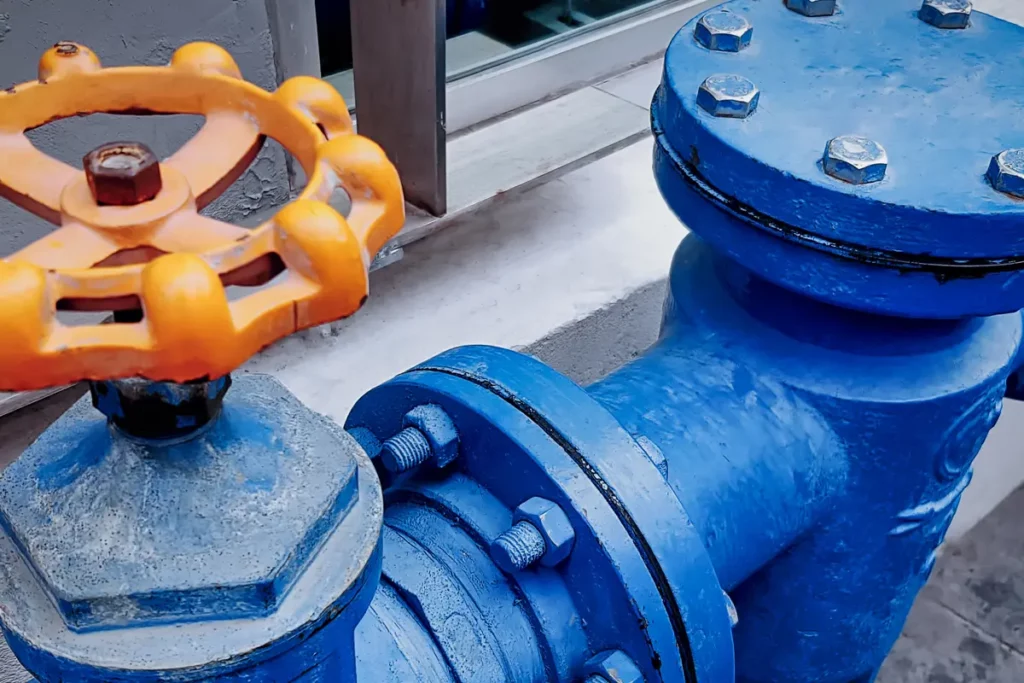Check valves are critical in wastewater and water pumping systems because they automatically open to allow forward flow and close to prevent reverse flow when the pumping mechanisms are not operating. Although the valves are critical to the system, they must be economical to purchase and minimize energy consumption with minimal maintenance.
Most importantly, they cannot slam and create damaging pressure surges within the piping system. Check valve slam is associated with a loud shock wave and subsequent water hammer within a piping system. The noise is not due to the impact from the disc slamming into the seat but the separation of the water column and the pressure surge that is generated. Check valve slam should never occur in well-designed systems with the correct valves installed.
What Causes Check Valve Slam?
Check valve slam occurs following a pump stoppage where a reverse flow of water passes through the check valve before the disc of the valve is completely closed. When the disc does close, the reverse flow back through the valve is immediately stopped, resulting in the flow energy being dissipated as noise within the pipe. As check valves are self-actuating devices, their closure will always ‘lag’ behind the decelerating flow to some extent following pump stoppage.
One of the best ways to prevent the slam from occurring is to ensure that the check valve selected will close as near as possible to when the decelerating flow stops moving forward and starts to reverse. The dynamics of the piping system determines the deceleration rate of the water column. Systems with surge tanks, vertical pipes, a steep slope, or a high head require fast acting check valves. On the other hand, a relatively flat and low-head system can endure longer closing times.
Proper Sizing and Selection Can Minimise Slam
Flow simulations and lab testing has proven that fast acting ‘non-slam’ check valves must contain the following design characteristics:
- The disc must be of low friction and inertia.
- Disc travel must be short.
- The motion must be assisted by springs.
Proper sizing and selection of valves can ensure these things. In many instances, check valves are chosen due to their pipe size, with the largest size being the most desirable to allow the most amount of liquid to flow through. The issue is that flow conditions regulate the internal performance of a check valve since the disc is always in the immediate flow path.
Therefore, if not enough flow exists through the valve to maintain the disc in the fully open position, the disc will continually oscillate, thus resulting in a higher pressure drop, premature wear and increasing the overall potential for failure. Therefore, to ensure there is proper sizing and check valve selection, the following considerations are critical:
- Application data including temperature, pressure and fluid characteristics
- End connection
- Envelope dimensions
- Horizontal or vertical installation
- Leakage requirements
- Line sizing
- Material compatibility with the fluid
- Seat type
- Valve rating
Choosing the correct size and type of check valve for the system application will have a major impact on the amount of water hammer endured by the piping system. In order to choose the correct valve, you need experts with experience in this area. John Valves, for example, has been supplying the community for over a hundred years, and manufacture check valves to specifically suit your system.
Summary
In summary, check valve slam can wreak havoc on your piping system but can also easily be avoided by looking at more than just the pipeline size to maximize flow capacity. Instead, considering the design characteristics of the valve and its suitability for the application can limit this issue.
Choosing the proper size and check valve type that best fits your system will minimise check valve slam by ensuring valves close as near as possible to the point where flow reversal occurs and in a way that involves low friction losses. For assistance in finding the best option that meets the needs of your system, make an appointment with our professional staff today!
Our experts can help ensure you minimize check valve slam which will improve the longevity of your piping system.



